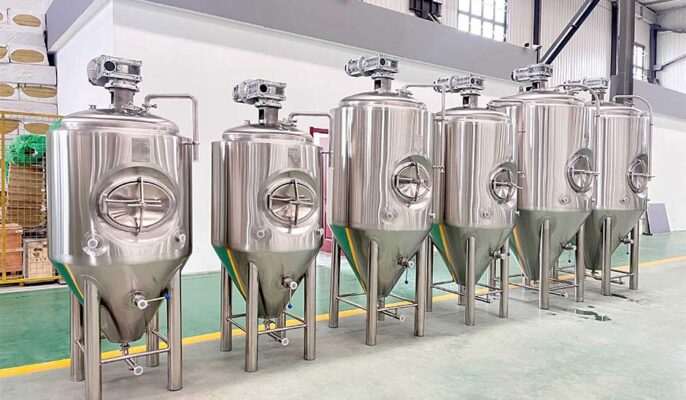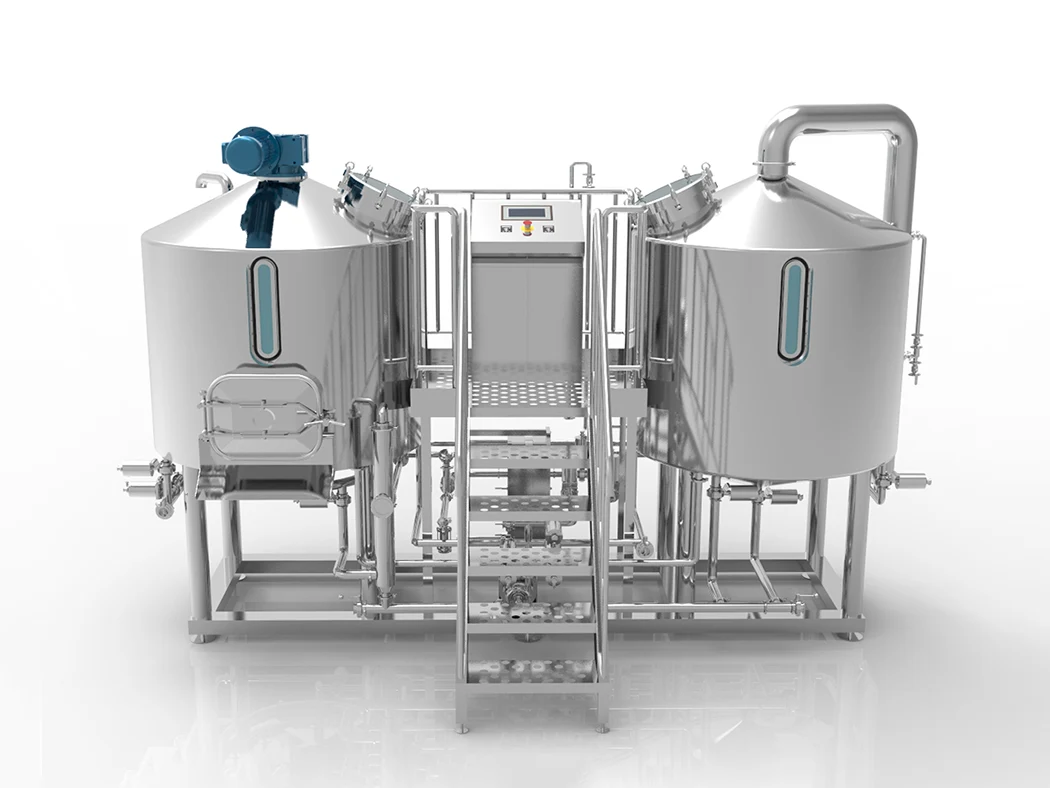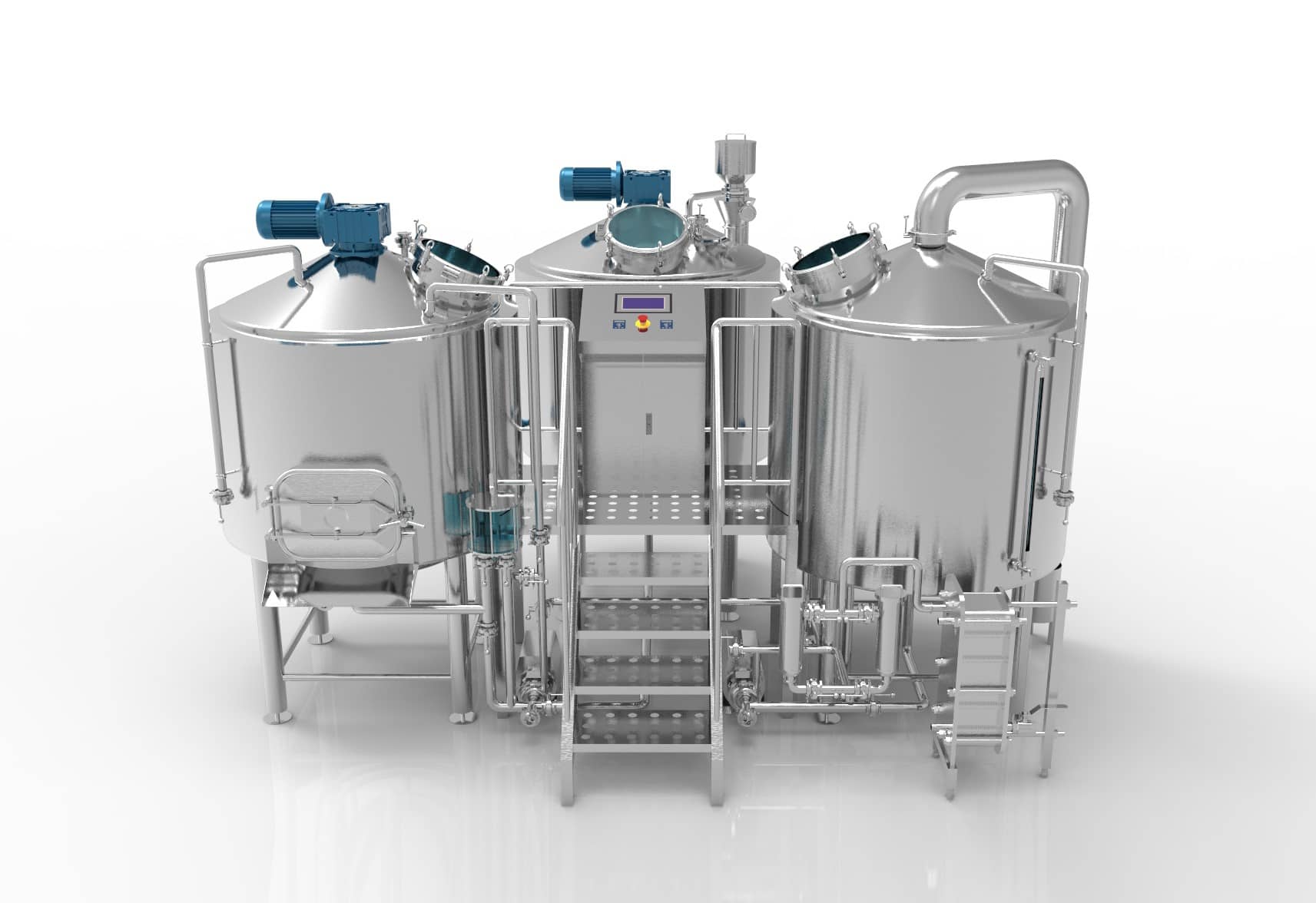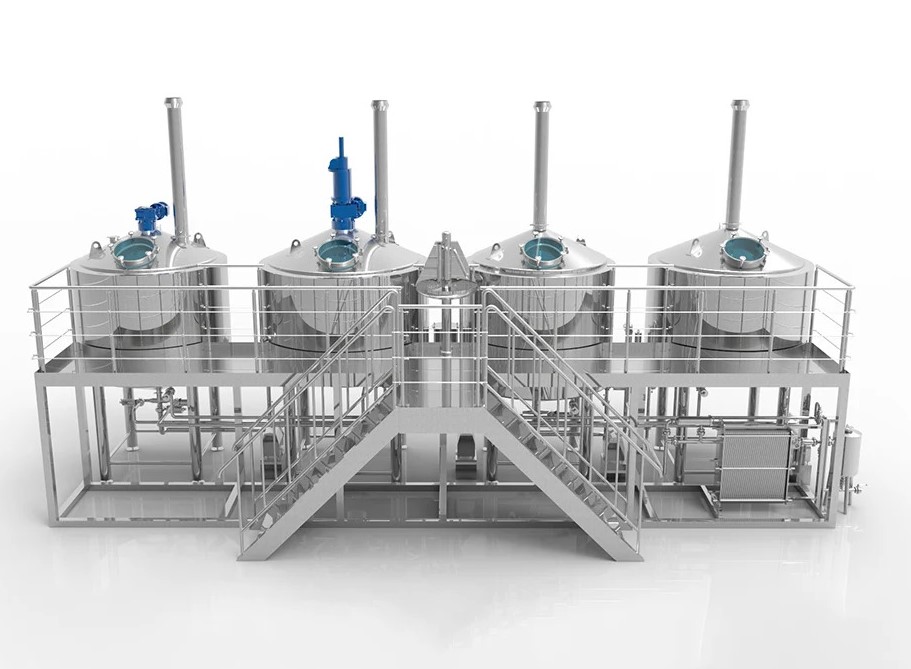Přestože se výroba vína a piva podobá, existují i určité rozdíly. Prvním a nejzřetelnějším rozdílem je, že pivo se vyrábí z obilí, a proto se i whisky vyrábí z obilí. Víno se vyrábí z ovoce. Nejčastějším společným rysem je, že buď pivo, nebo víno vyžaduje vložení kvasinek, které přemění rozdrcené ovoce nebo přemění všechny dostupné cukry v zrnech. Kvasinky jsou jednobuněčný organismus, který se vyskytuje v přírodě.
Kvasná nádrž na pivo
Materiál: Pivo fermentační nádrže jsou vyrobeny z nerezové oceli, která se snadno čistí, dezinfikuje a udržuje. Dubové dřevo se ke kvašení piva nepoužívá.
Design: Pivní fermentory jsou navrženy tak, aby zvládaly proces kvašení a kontrolovaly faktory, jako je teplota a tlak. Obvykle mají chladicí pláště, které regulují teplotu kvasícího piva.
Proces kvašení: Kvašení piva probíhá tak, že kvasinky přeměňují maltózu na alkohol a oxid uhličitý. Proces kvašení piva je obecně rychlejší než u vína a obvykle trvá několik dní až týdnů.
Řízení kvasinek: Při vaření piva se používají různé kmeny kvasinek pro dosažení specifických pivních stylů.
Karbonizace: Některé pivní styly vyžadují po kvašení více sycení, a to buď zbytkovou činností kvasinek, nebo nuceným sycením oxidem uhličitým.
Čištění a filtrace: Některé pivovary používají k oddělení pevných částic a usazenin od piva specializované kónické tanky.

Nádrž na kvašení vína
Materiál: Nádrže na kvašení vína jsou obvykle vyrobeny z nerezové nebo dubové oceli, přičemž nerezová ocel je běžnější.
Design: Konstrukce nádrže na víno umožňuje šetrnou extrakci chuti, barvy a tříslovin z hroznových slupek a dalších pevných látek.
Proces kvašení: Kvašení vína probíhá tak, že kvasinky přeměňují glukózu na alkohol. Proces kvašení vína je obecně pomalejší a trvá déle než kvašení piva, často trvá týdny nebo dokonce měsíce.
Řízení kvasinek: Při výrobě vína se ke kvašení hroznové šťávy používají přírodní nebo vybrané kmeny vinných kvasinek.
Punching a Pumping: Při kvašení červeného vína se často používají techniky pro úpravu uzávěru, aby se zvýšila extrakce barvy a chuti, jako je punčování (zatlačení pevných částic hroznů dolů do kapaliny) nebo pumpování (přečerpání kapaliny do uzávěru).
Stárnutí: Po kvašení může víno zrát ve stejných nádržích nebo se může přelít do sudů k dalšímu zrání.
Fermentační mikroorganismy jsou různé
Kvašení piva je klíčovým krokem v procesu vaření piva, při kterém kvasinky přeměňují glukózu (cukr) v mladině na alkohol a oxid uhličitý. Tento proces je rozhodující pro výslednou chuť piva a obsah alkoholu. Saccharomyces cerevisiae (Saccharomyces cerevisiae) jsou primární kvasinky používané při kvašení piva. K vaření různých stylů piva se používají různé kmeny kvasinek.
Ke kvašení vína lze použít různé kmeny kvasinek, včetně Saccharomyces cerevisiae a Saccharomyces bayanensis. Někteří vinaři navíc používají přírodní nebo divoké kvasinky, které se nacházejí na slupkách hroznů.
Mezi výrobou piva a vína existují i další rozdíly, které jsou jemnější a souvisejí spíše se snahou vinaře nebo vinohradníka vytvořit hotový produkt s netypickými chuťovými profily. Klasickým příkladem je oblíbené "kyselé" pivo, kdy sládek infikuje mladinu specifickými organismy, aby dodal hotovému výrobku další složitost. Pokud jde o víno, první, co nás napadne, je víno ve stylu "rancio". Jedná se o techniku, při níž vinaři zrají víno, aby vlastně podpořili oxidaci.
Proces vaření je odlišný
Výroba vína
- Sběr hroznů
- Hrozny se lisují na hroznovou šťávu
- Šťáva se přelije do kvasné nádoby a spojí se s kvasinkami ke kvašení.
- Po dokončení kvašení se víno stabilizuje, upravuje kyselinami, chemickými látkami a doslazuje, aby se vytvořil chuťový profil požadovaný vinařstvím.
- Hrozny jsou baleny

Vaření piva
- Pěstování ječmene a jeho přeprava do sladovny.
- Sládek klíčí enzymy potřebné k přeměně škrobu uloženého v každém pšeničném zrnu na cukr. To je proces sladování.
- Slad se suší na základní slad nebo na speciální zrna.
- Slad se převáží do pivovaru až do doby, než se použije.
- Vytváření různých sladových příchutí podle požadovaného piva
- Rozdrťte slad a přidejte ho do horké vody, abyste vytvořili kaši.
- Nechte stát 30-90 minut, aby se škrob rozložil na jednodušší cukry, které se rozpustí ve vodě a vznikne mladina.
- Mladina se shromažďuje v kotli a cukr v zrnech v rmutu se promyje horkou vodou.
- Mladina se vaří v hrnci, často s chmelem nebo jiným kořením, aby se vytvořila komplexnější chuť.
- Mladina se ochladí a přelije do kvasné nádoby.
- Kvasinky spotřebovávají jednoduché cukry a kvašením produkují oxid uhličitý a alkohol.
- Po ukončení kvašení kvasinky z roztoku vypadnou nebo se odfiltrují.
- Pivo sycené oxidem uhličitým a balené
Jsou zapotřebí různé teploty
Teploty kvašení piva se liší v závislosti na stylu piva a použitém kmeni kvasinek. Obecně lze říci, že kvašení piva probíhá obvykle při nižších teplotách než u vína, obvykle kolem 10-24 °C (50-75 °F).
Teplota kvašení vína se pohybuje v rozmezí 10-29 °C (50-85 °F) v závislosti na odrůdě hroznů a stylu vína. U některých druhů vína, jako je červené víno, může být kvašení teplejší, aby se získaly barevné a chuťové látky.
Fermentační nádrže jsou navrženy
Kvasné nádoby na pivo mají obvykle kónický tvar, aby se ze dna nádrže odstranily zbytky a kvasinky. Mohou mít také chladicí systém pro regulaci teploty kvašení.
Kvasné nádoby na víno jsou obvykle otevřené nebo uzavřené. Nádrže s otevřeným víkem se používají při výrobě červeného vína, aby se usnadnilo stlačování víček hroznů, zatímco nádrže s uzavřeným víkem jsou běžné při výrobě bílého a některých druhů červeného vína. Oba typy mohou být vybaveny systémem regulace teploty.
Navzdory těmto rozdílům hrají kvasné kádě na pivo i víno klíčovou roli při výrobě příslušných nápojů, protože zajišťují přeměnu cukrů na alkohol a rozvoj požadovaných chutí a vůní. Nerezové fermentory se vyrábějí mnoha různými způsoby a můžete se obrátit na výrobce Micet a nechat si navrhnout fermentor na víno nebo pivo na míru. Velikost, tvar, ventily a armatury lze upravit podle vašich představ.




